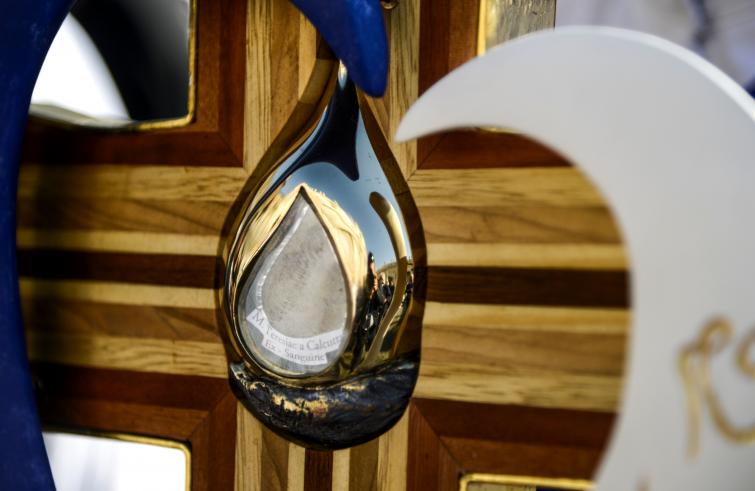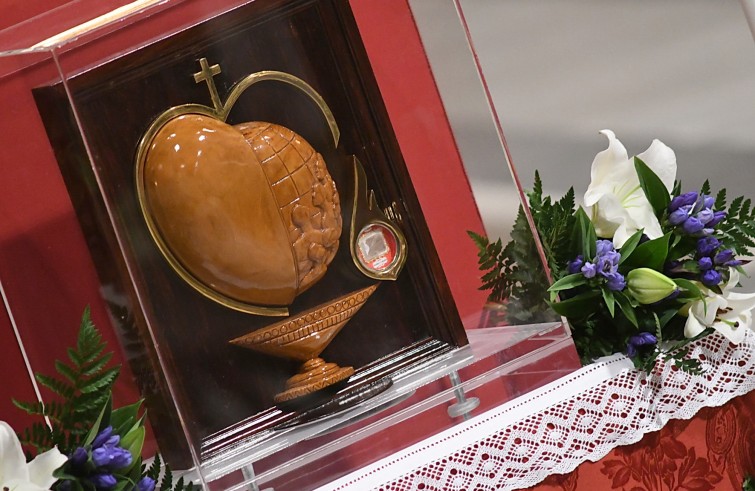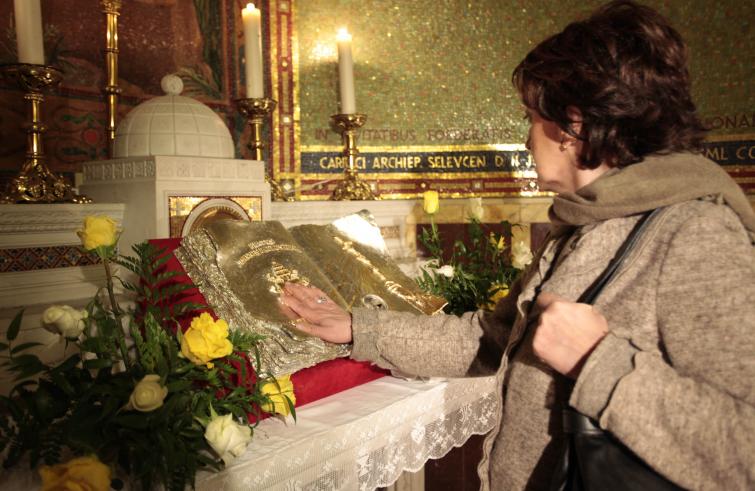
The Instruction on “Authenticity and preservation of relics in the Church” issued by the Congregation for the Causes of Saints states that “Relics of the Saints and Blessed cannot be exposed for veneration of the faithful without a special certificate from ecclesiastical authority that guarantees their authenticity”. The new guidelines expound on the canonical procedure governing the verification of the relics and the mortal remains, to ensure their preservation and promote veneration. Canonical recognition, removal of fragments and confection of relics, transfer and protection of the relics are the four actions on which the document provides particularized guidance. The document also specifies the rules for permitting relics to go on pilgrimage, within the same diocese or to other dioceses.
Avoiding abuse, the first rule enshrined in the Instruction, providing detailed indications on the preservation of the relics, states:
“they must be kept in special sealed urns and preserved in places that guarantee their safety, respect their sacredness and favour their veneration.” Even the so-called “non-first-class relics” – small fragments of the body of the blessed and the saints or objects that have been in direct contact with them – must be kept in sealed cases, “avoiding any form of superstition and merchandising.”
A similar regulation, recommends the Congregation, is to be applied to the mortal remains of the servant of God and the Venerable, whose beatification and canonization causes are under way: “Until they are raised to the honours of the altars through beatification or canonization their mortal remains cannot enjoy any form of public veneration, nor those privileges that are reserved only to the bodies of those who have been beatified or canonized”.
The Instruction is directed to the bishop of the diocese or of the Eparchy where the relics are kept, he is tasked with effectuating the new regulation, after the consent of the Congregation for the Causes of Saints.

The preliminary condition for handling the relics is to obtain the consent of the heirs, only then the competent bishop can request the Dicastery’s authorization to carrying out the related procedures, providing specific indications on where the relics or the mortal remains are kept. In case of transfer within the border of the same diocese or Eparchy, the bishop must provide the Congregation with detailed information on the place where the relic or mortal remains have been transferred, with annexed project along with the consent of the bishop that receives the relic or mortal remains transferred to another diocese or Eparchy. The Instruction provides equally detailed rules on the alienation of relics within the diocese or in another diocese or Eparchy: in such cases the competent bishop must send a copy of the written consensus of the alienator or future owner to the Congregation, along with the consensus of the bishop who will receive it and the project on its new destination, in case of alienation to another diocese. As regards the pilgrimage of relics to other dioceses or Eparchies
“the bishop must obtain the written consensus of each receiving bishop and send a copy to the Congregation.”

The postulator is in charge of preparing and certifying the authenticity of the relics. During canonical recognition, “the dismemberment of the body is prohibited, unless the bishop has obtained the consensus of the Congregation for the Causes of Saints for the confection of holy relics.” Furthermore, the new rules
“absolutely prohibit trade – giving away a relic in exchange for money or for other objects – and sale of relics, namely transferring the property of a relic at a given price – as well as their display in unholy or unauthorized sites.”
Canonical recognition takes place in absolute secrecy and thus its public dissemination must be avoided in every possible way. The document states: “Before the extraction of relics or mortal remains from the place where they are kept, any authentic document on the last burial, canonical recognition or transfer should be read aloud by the notary. If there is no authentic document or if the urn or seals attached to it appear to be broken, utter diligence must be adopted to ensure that those are truly the relics of the blessed or the saint or the mortal remains of the servant of God or the Venerable.” If deemed necessary, conservative treatment can be carried out after the examination of experts and their written report, prior to the placing of the relics or the mortal remains in a new urn. It is of utmost importance to ensure that
“nobody removes or places something inside the urn.”
Provided the authorization of experts, it is possible to remove fragments that were already separate from the body. Having heard the postulator of the Cause, the bishop will decide the place where the removed fragments will be kept and preserved.










